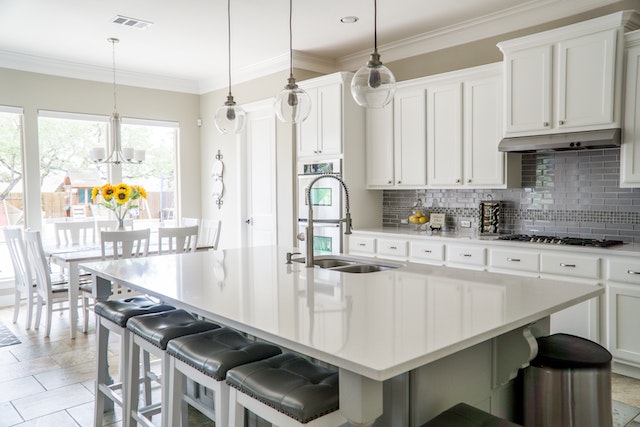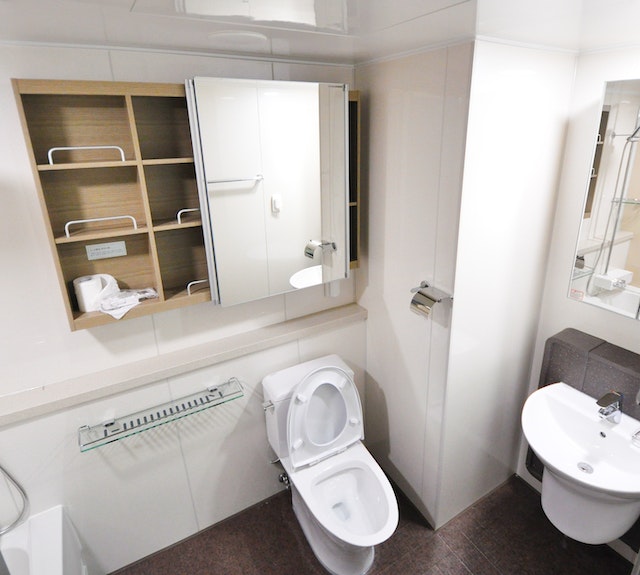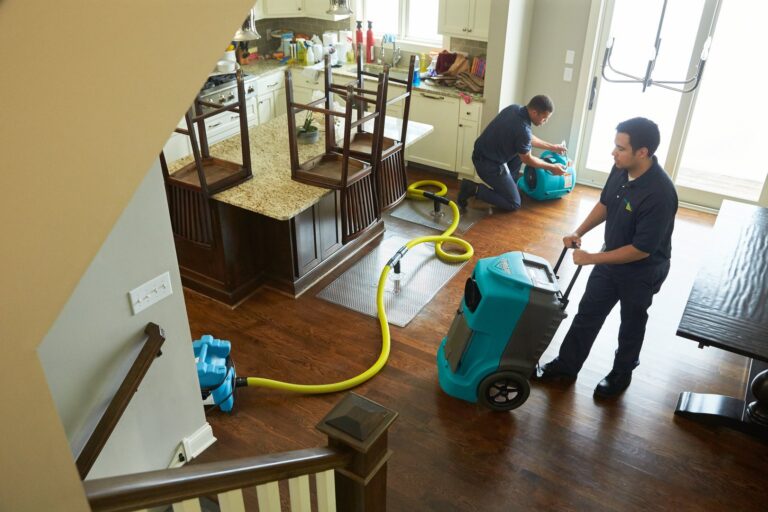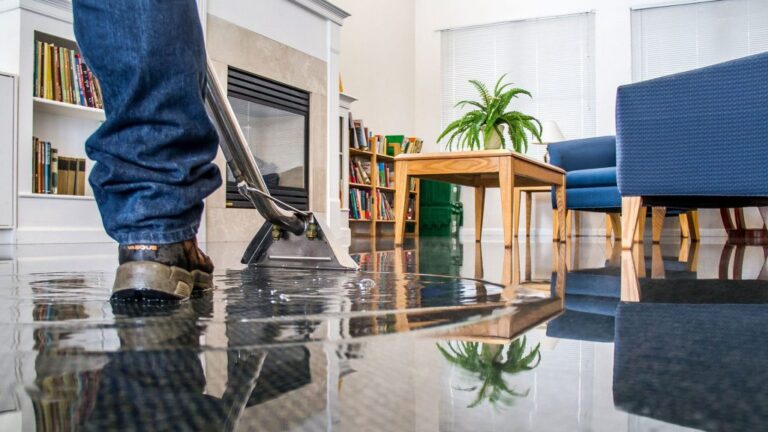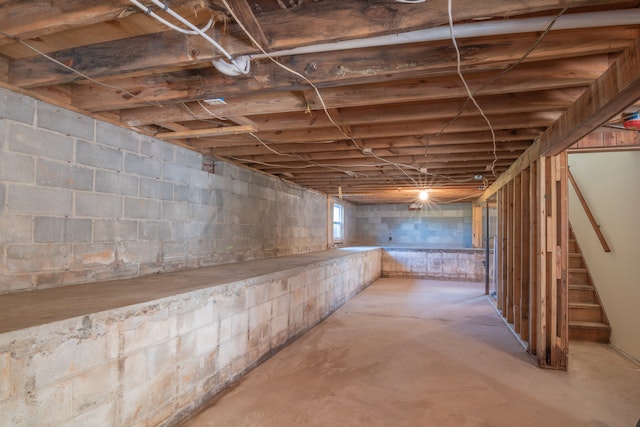Do you know what to do when a kitchen floods? Beyond finding the cause of the kitchen flood, it’s also important to thoroughly dry and remove all water. Then, cleaning and sanitization can help you avoid mold growth.
This guide will help you learn how to repair and remediate following a kitchen flood. We’ll also review a few tips for preventing future floods.
What Causes a Flooded Kitchen?
Many things can cause a flooded kitchen, including:
- Clogged kitchen sink drain
- Corroded or rusted sink faucet, pipe, or drain
- Loose hose connections
- Worn door seal on the refrigerator or dishwasher
- Leaking air conditioning unit
- Faulty garbage disposal
- Worn-out gasket or seal
- Malfunctioning or leaking appliances
- Burst water line near the inlet valve
- A slow water leak that worsens over time
Flooded Kitchen – What to Do | Your Water Damage Restoration Guide
Follow these steps when cleaning up after a kitchen flood:
Turn Off the Water and Electricity
Safety first. One of the first things to do when dealing with a flooded kitchen is to turn off the water supply and electricity.
You can turn off the water source from the specific appliance, or if you’re not yet sure what caused the flooded kitchen, the whole home’s water supply line. You can usually do this using the shutoff valve at the water meter.
If standing water has affected the outlets, power cords, or electrical appliances, you may need to turn off the power supply at the main circuit breaker. Keep the power off until it’s safe to turn it back on. If you notice sparking or smell gas in your home, drop everything and call the fire department immediately.
It’s essential to be careful with gas stoves. Soaked or pooled water on the kitchen floor can compromise your gas stove. You may need to turn off your gas connection if the supply line has been affected.
Contact a Water Damage Restoration Company
You may need professional cleanup services after a broken pipe or flooded kitchen to help salvage your personal belongings and protect your home. Leaving flood water untreated can lead to bacteria and mold growth. Eventually, flood water can affect the structural integrity of your kitchen floor, walls, and ceilings.
Water damage restoration companies have advanced equipment to help prevent mold damage. They can even use professional tools to speed up the drying process so you can take back control of your kitchen faster after a flood.
Timely repairs and remediation services are essential following a kitchen flood to prevent buckling floors, bubbling walls, and dangerous spores. Professional cleanup companies also have the experience to locate excess water or water damage that’s not as easily visible. Water can get trapped in the floorboards or soak into the drywall.
Contact a professional water damage restoration company to begin the drying process as soon as possible. It takes just 24-48 hours for mold to grow after kitchen flooding.
A phone call to a Nashville water restoration company should also be one of your first steps after a kitchen flood because they can help guide you through the remediation process. Your restoration company can assist with contacting repair contractors, documenting your insurance claim, and salvaging your personal items.
Identify the Cause (Backed Up Kitchen Sink, Faulty Water Supply Line, or Broken Garbage Disposal)
Next, you’ll want to find the cause of the kitchen flood. A few things can cause a flooded kitchen, so you may need to do some investigative work. The sink, faucet, refrigerator, dishwasher, or water purifier are a few places to check for leaks or damage.
You may be able to identify the cause by looking at where most of the water damage is located. For example, kitchen flooding from a dishwasher will pool mostly around the dishwasher. You may also notice soapy water on the kitchen floor from using too much detergent in the dishwasher.
If the flooded area is mostly around the kitchen sink and directly underneath it, it may be due to a backed-up drain or leaking faucet. Kitchen faucets can become corroded or rusted over time.
Consider Repairs
Consider your ability to make the necessary repairs. While you can save on repair costs by making them yourself, it’s usually best to leave things like a burst pipe to the professionals. You may need to call a local plumber to make plumbing repairs. If your home’s outlets or electrical components were affected, you’ll need to contact a licensed electrician.
This is also where working with a restoration company can come in handy. Your team of professionals can help you collect quotes and schedule repairs.
Depending on the extent of the damage, you may also require additional repairs. A flooded kitchen may also need new drywall or furnishings. Water quickly soaks into the walls and damages the drywall. You or a contractor will need to cut out the affected pieces and replace them. You may even need to replace full sections of drywall.
In some cases, you may also need new flooring. Water can seep into the floorboards and cause them to bend and warp. You may even need new sub-flooring.
Notify the Insurance Company
Many homeowners insurance policies cover water damage. Your policy may not cover the cost of repairs related to the flood damage. Still, most will cover the cost of water and mold removal, including the services of a water damage restoration company.
Take photographs of all damage, including the furniture, kitchen cabinets, wood cabinet doors, and countertops. Don’t forget to include evidence of the water leak or whatever caused the flooded kitchen.
Remember that while you may want to begin cleaning up as soon as possible, the insurance company will likely require evidence of the damage. This means it’s important to take photographs of the damage before removing water or drying out the cupboards or walls.
Remove Water and Start the Drying Process
After the repairs are done, it’s time to remove the water and dry out the flooded kitchen. Your remediation company will handle this task, but you can also remove excess water before they arrive, as long as it’s safe.
Cleaning up the water may be as simple as mopping the kitchen floor, or it may be a much bigger project that requires the services of a water damage restoration professional. Leave the kitchen cabinets open to allow airflow in to help dry them. You can also open the kitchen drawers to help them completely dry. Wipe down the cabinet doors and shelves to remove all water.
Don’t forget to remove all personal belonging from the flooded kitchen. You may need to throw out wood furniture if it has been sitting in the water for a long time. You can also place aluminum foil on the legs of your kitchen table or chairs to prevent moisture from moving up them. Wooden furniture is made with porous materials that are more likely to retain water.
Use a wet-dry vacuum and heavy-duty fans to dry the kitchen floor. A sump pump can also help remove large quantities of water from the kitchen floor.
A dehumidifier can minimize the humidity levels in the room. You could also open the windows in the kitchen if it’s cool outside. Avoid using your air conditioner if you’re unsure whether the water damage has led to mold growth.
Inspect the Room for Less Visible Damage
Removing water from a flooded kitchen also means removing it from less visible areas. You’ll want to pull up the baseboards and check underneath appliances for any missed water. You may also notice water damage in or behind the lower kitchen cabinets. Make sure you also remove any carpeting or floor rugs.
Clean and Sanitize the Kitchen
Standing water can lead to bacteria and mold growth. After removing all excess water from the flooded kitchen, it’s time to clean and sanitize the room. One of the benefits of working with a professional mold removal/remediation company is that they’ll use the best products during the restoration process to remove all traces of bacteria and mold.
Don’t forget to clean all areas exposed to water, including the floors, walls, furniture, and kitchen cabinets. It’s also important to wipe down and clean all belongings exposed to the water.
How To Avoid a Flood in the Kitchen
While it may not always be possible to prevent a flooded kitchen, there are things that you can do to minimize the chance, including:
- Keep up with preventative maintenance on all kitchen appliances.
- Take extra care when cleaning around the refrigerator to maintain a secure water supply line.
- Install a copper or steel water supply line instead of a plastic water hose.
- Replace the water lines in the ice maker with stainless steel or copper materials.
- Routinely check the dishwasher seal.
- Know how to identify the signs of a burst pipe.
- Regularly pour boiling water down the drains to remove clogs.
- Check the water line for rust or corrosion and replace.
If your kitchen flooded, you’ll likely need timely repairs and water removal services. No one wants to come home to a kitchen flooding. Whether your kitchen is flooded from the sink backing up or a clogged drain, the water damage from a kitchen flood can be expensive and inconvenient.
One of the first things you should do after a kitchen flood is contact Nashville Water Damage Restoration to take action and minimize your damages. With prompt, professional repairs and cleanup services, you’ll have safe access to your kitchen in no time.

